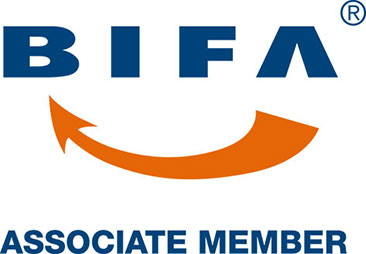
The Border Target Operating Model (BTOM) was officially launched by the UK government in August 2023 and outlined a new approach to managing imports and border checks post-Brexit.
The initiative focuses on ensuring efficient, safe, and secure import and export processes. Phased implementation began in January 2024, with the third and final phase being rolled out at the end of October of this year. The model is built around three key areas:
- Risk-based controls: Introduced in January 2024 and focused on managing risk of importations of goods to the UK, categorising the level of risk they pose. Higher-risk goods, such as live animals or certain food products, face stricter checks and documentation requirements, while lower-risk goods face less stringent processes
- Digital systems: The 2nd phase of the rollout was completed in April 2024 and emphasises the use of digital platforms to simplify customs procedures and minimise paperwork, with the desired outcome of reducing delays at the border. The process integrated with pre-existing systems like the Goods Vehicle Movement Service (GVMS) and the UK’s Import Control System (ICS)
- Collaboration with businesses: The final phase of rollout see the government aiming to work closely with businesses to ensure that the new border processes are efficient and realistic for the sector
Increased administrative burdens and financial strain
The government has promised that the model will minimise trader delays, increase profitability and improve customer experience, but there are also negative impacts; an area that looks to cause the most concern for freight companies is the increased administrative burden. Freight companies are now required to handle more complex documentation, manage risk-based inspections, and ensure that shipments meet the new compliance standards. This increase in operational complexity has a knock-on effect on credit management.
Freight companies often work on tight margins and require efficient cash flow to maintain operations. With more administrative work required and potential delays at customs, these companies may face interruptions in their payment cycles. The longer the goods take to clear customs, the more the payment from clients is delayed. For companies that are not well-prepared for these new procedures, this could result in cash flow shortages, thereby impacting their ability to manage credit effectively.
Client creditworthiness and risk assessment
Freight companies will also need to reassess the creditworthiness of their clients under the BTOM. The changes to border operations may affect their clients’ ability to meet payment deadlines, especially if they are unfamiliar with the new procedures or experience delays in goods clearance. Companies that import goods could face cash flow issues of their own due to unforeseen delays or additional costs at customs.
As such, freight companies may need to adopt more stringent risk assessments before extending credit to clients. This includes reviewing clients’ ability to adapt to the new operating model, their financial health, and whether they are equipped to handle any resulting disruptions. Offering extended payment terms or flexible credit lines may become riskier for freight companies, which could potentially lead to an increase in bad debt if clients default on payments.
Potential for increased costs and bad debts
Under the BTOM, there may also be increased costs associated with customs declarations, risk-based inspections, and ensuring compliance with sanitary and phytosanitary (SPS) standards for food and agricultural goods. These additional costs may be passed onto clients, but there is always the risk that some clients may not be able to cover these increased expenses.
If a freight company extends credit to clients who are then unable to meet these higher costs, it could result in an increase unpaid invoices and late payment. Credit management teams within these companies will need to be proactive in monitoring payments and implementing credit control measures to mitigate the risk of bad debts accumulating.
Adjusting payment terms and credit policies
To adapt to the changes brought by the BTOM, freight companies may need to adjust their payment terms and credit policies. Shorter payment terms could be introduced to ensure that cash flow is maintained, especially for clients who are likely to be affected by delays or increased costs. Freight companies may also consider requesting upfront payments or larger deposits to cover potential risks. Where settlement is not forthcoming, forward thinking freight companies are instructing specialist debt recovery firms, such a Controlaccount, to recover unpaid sums.
In addition, reviewing and tightening credit limits may become essential in minimising exposure to high-risk clients. This may result in more freight companies opting for trade credit insurance to protect against non-payment, especially for international clients whose financial stability could be impacted by the BTOM regulations.
Strengthening client relationships and communication
Effective credit management in the face of the BTOM’s challenges also relies heavily on maintaining strong client relationships. Freight companies will need to keep their clients informed of the potential delays, additional costs, and procedural changes that could arise due to the new operating model. Open communication will allow clients to prepare for these challenges and potentially renegotiate payment terms if necessary.
Freight companies that foster transparent relationships with their clients may be better positioned to manage credit risk effectively, as clients who are well-informed are more likely to plan ahead and avoid defaulting on payments.
To discuss any areas that are impacting cashflow or productivity in your organisation, please get in touch with our team to discuss areas where we can support your credit control teams.












